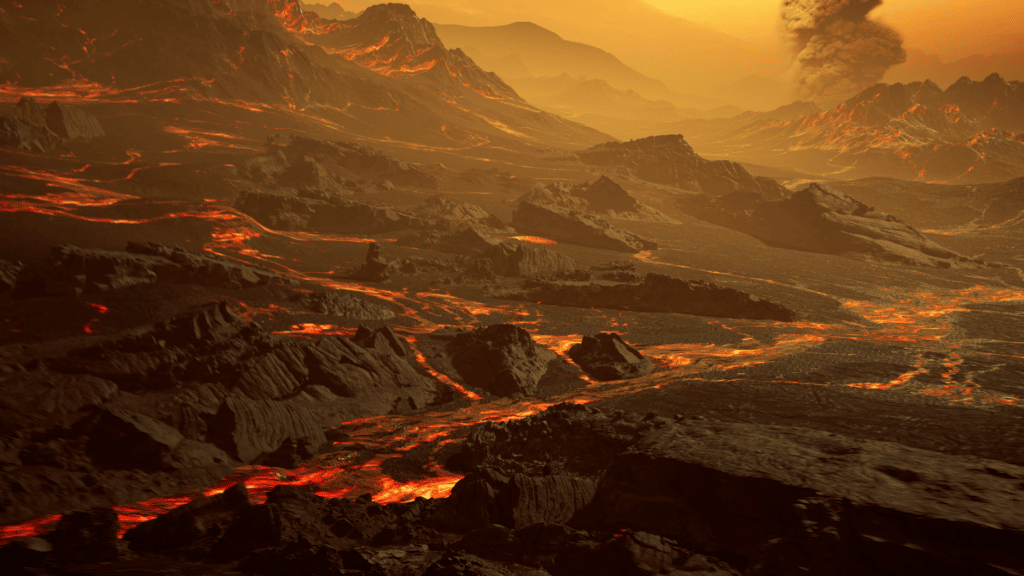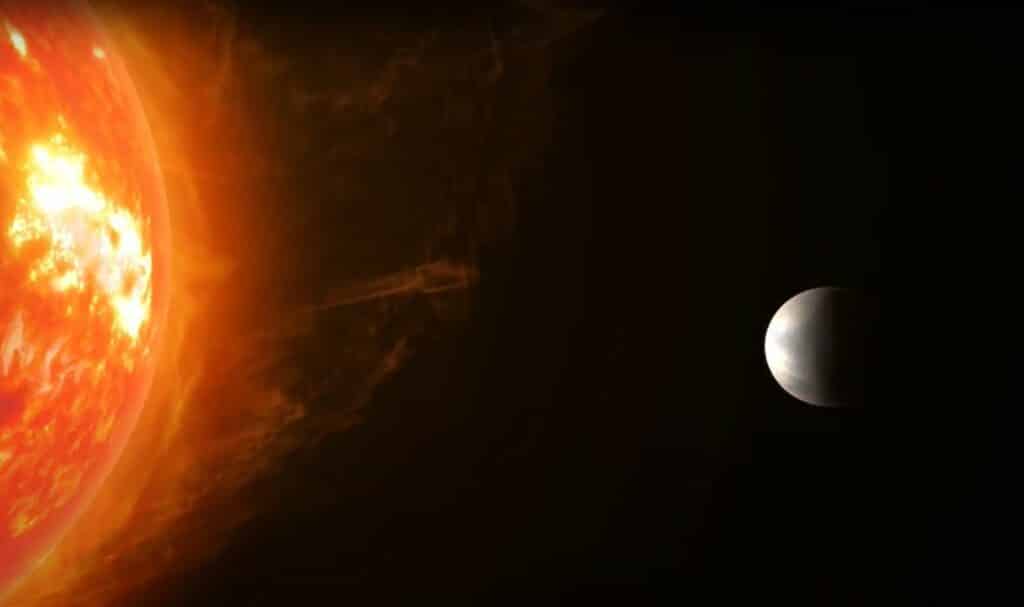The recent discovery of a new planet outside of Earth’s solar system may lead astronomers to other habitable planets. The rocky planet, referred to as Gliese 486b and dubbed a “super-Earth,” is larger than our planet, but not as large as the gas giants. At approximately 26 light-years away, this galactic neighbor’s atmosphere could help researchers determine which planets are suited for human life.
Also called a “super-Earth,” Gliese 486b makes it orbit around a red dwarf star, according to scientists from the University of New South Wales in Sydney (UNSW). The temperature at its surface is 430℃, making it unable to sustain human life. However, researchers say other forms of life may be able to survive.
“This is the kind of planet we’ve been dreaming about for decades,” says Dr. Ben Montet, an astronomer and Scientia Lecturer at UNSW Science, in a March 2021 statement. “We’ve known for a long time that rocky super-Earths must exist around the nearby stars, but we haven’t had the technology to search for them until recently. This finding has the potential to transform our understanding of planetary atmospheres.”
The rocky terrain makes it similar to Earth, however, no other characteristics of Gliese 486b resemble our world. It has a density three times that of Earth and is approximately 30% larger. Additionally, the blazing hot surface may contain streams of lava, which are capable of melting lead.
Although other super-Earths have been found, this particular planet is unique in two ways. The atmosphere becomes “puffy” due to the intense heat, which allows astronomers to measure it. Also, astronomers are able to view the atmosphere more closely when the planet transitions in front of its star, making it possible to obtain a thorough analysis of atmospheric data.
“Understanding super-Earths is challenging because we don’t have any examples in our backyard. Gliese 486b is the type of planet we’ll be studying for the next 20 years,” says Dr. Montet.

Researchers can determine a lot about a planet and its habitability by studying its atmosphere. A planet that lacks an atmosphere may have a neighboring, volatile star that prevents the planet from supporting life. Contrarily, a planet that has a prolonged, viable atmosphere may have the stability to sustain life.
“We think Gliese 486b could have kept a part of its original atmosphere, despite being so close to its red dwarf star. Whatever we learn about the atmosphere will help us better understand how rocky planets form,” explains Dr. Montet.
As the planet transitions in front of its star, a small amount of starlight radiates the atmosphere by “transmission spectroscopy,” allowing researchers to study the atmosphere. Likewise, as the planet transitions behind its star, starlight lights up the planet’s surface by “emission spectroscopy,” allowing researchers to study the surface. Data is collected by a spectrograph, which separates light by wavelengths, helping astronomers to decipher the atmosphere’s chemical composition.
“This is the single best planet for studying emission spectroscopy of all the rocky planets we know. It’s also the second-best planet to study transmission spectroscopy,” says Dr. Montet.
Although Gliese 486b is an amazing find, research of its atmosphere and surface deem the planet uninhabitable. “With a surface of 430℃, you wouldn’t be able to go outside without some kind of spacesuit. The gravity is also 70% stronger than on Earth, making it harder to walk and jump. Someone who weighed 110lb. on Earth would feel like they weighed 187lb. on Gliese 486b,” said Dr. Montet.
Additionally, Gliese 486b is so close to its star, the rotation is extremely fast. On Earth, this process takes 365 days. On Gliese 486b this process would take only 36 hours, which produces super-storms in the atmosphere.
“The planet is really close to its star, which means you’d really have to watch out for stellar storms. The impacts could be as innocuous as beautiful aurorae covering the sky, or they could completely wipe out electromagnetic systems,” says Dr. Montet.
Despite the unstable, uninhabitable conditions of the planet, Dr. Montet considers the planet “too valuable to cross off our interstellar bucket list just yet.”
“If humans are able to travel to other star systems in the future, this is one of the planets that would be on our list. It’s so nearby and so different than the planets in our own solar system,” said Dr. Montet.
In the search for planets capable of sustaining life, researchers searched for planets similar to Earth: smaller planets with rocky terrains that orbit stars similar to the sun. However, according to Dr. Montet, the study of red dwarf stars like the star of Gliese 486b can be tricky.
“Red dwarfs are known to have a lot of stellar activity, like flares and coronal mass ejections. This kind of activity threatens to destroy a planet’s atmosphere. Measuring Gliese 486b’s atmosphere will go a long way towards deciding if we should consider looking for signs of life around red dwarfs,” said Dr. Montet.
The discovery was facilitated by NASA’s Transitioning Exoplanet Survey Satellite (TESS), as well as additional telescopes in Chile, Hawaii, Spain, and the U.S. The team was composed of nearly 70 astronomers, including a citizen astronomer, Thiam-Guan (TG) Tan who confirmed the planet from his backyard.
“I built my observatory more than 10 years ago to see if I could participate in the search for planets. It has been very satisfying to be able to confirm that a bloke in a backyard can contribute to significant discoveries, such as Gliese 486b,” said Mr. Tan.
“It’s an interesting time in astronomy. TESS is producing all of this data, but it’s more information than any person or group can look at. Citizen scientists have an opportunity to get involved in testing astronomical data, whether it’s confirming a planet sighting or looking for transiting planets. These kinds of collaborations between professional and amateur astronomers are really helping advance the scientific field,” said Dr. Montet.
“The easiest way to get involved is to create an account [with Planet Hunters] and start looking at TESS data. You don’t even need a fancy telescope. Who knows – you might even be able to find the next Earth-sized planet,” added Dr. Montet.
The findings are published in the journal Science.
Article written by Amanda Christmas












-392x250.png)